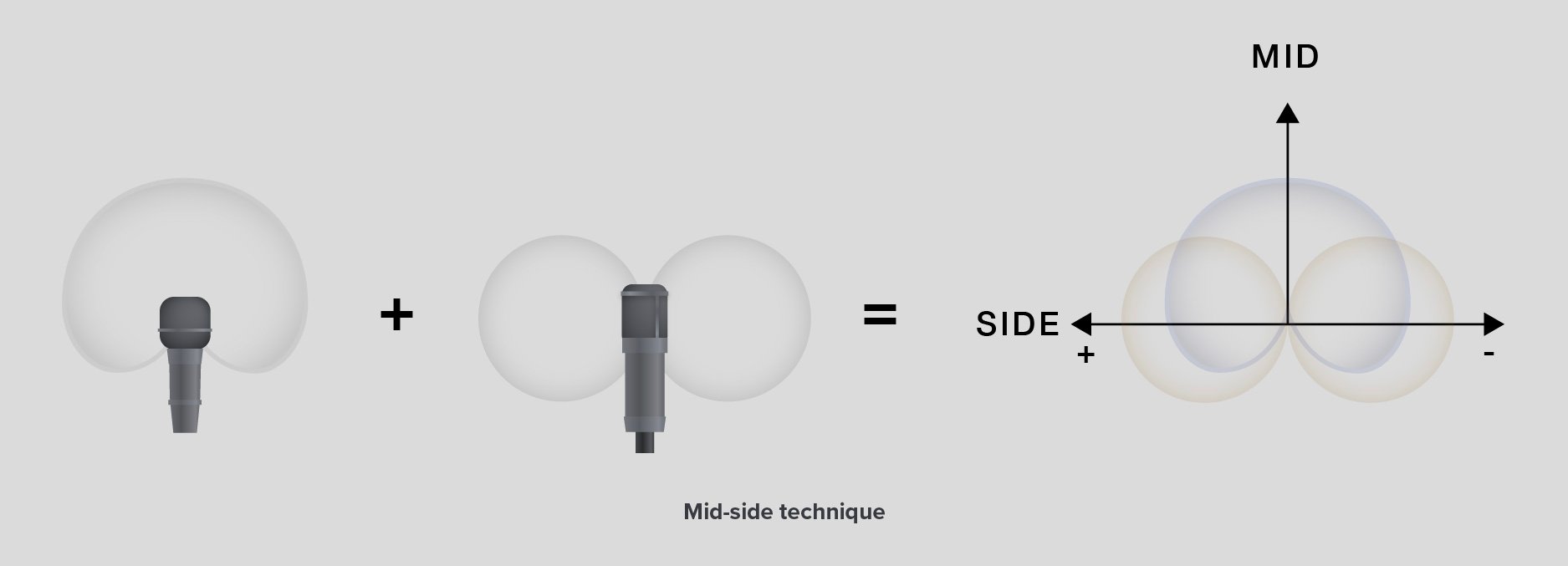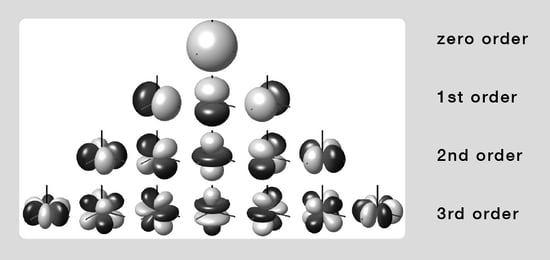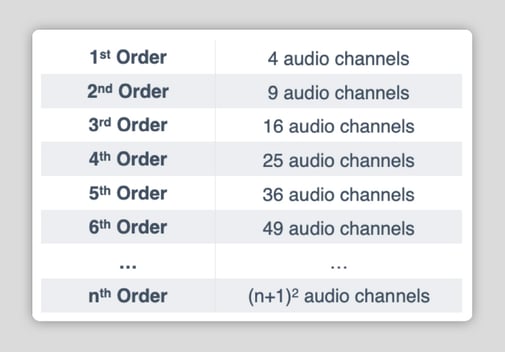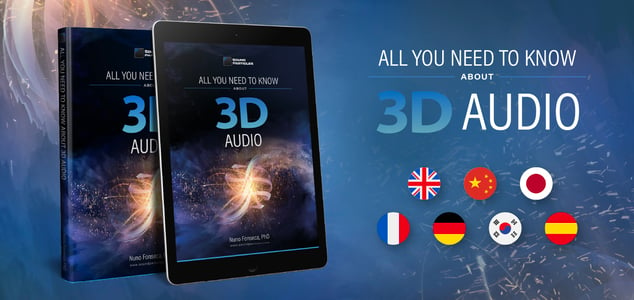Now that we talked about channel-based audio and object-based audio, it's time to talk about Ambisonics and how to best use it.

The main goal of Ambisonics was to create an audio format that would be independent of the output reproduction layout – if you record something in Ambisonics, it wouldn’t matter how many speakers you have during playback, or their positions, because Ambisonics would be able to adapt to it.
Although Ambisonics was created in the 70’s (based on the work of Michael Gerzon), the interest in this format had significant increase during the last decade, mainly associated with VR applications.
But before jumping into Ambisonics and fully understanding it, we need to talk about a far away "cousin" - the middle side.
Mid-Side is a widely used stereo recording technique, that consists of a cardioid microphone pointing towards the front (Mid) and a figure-of-eight microphone pointing to the sides (Side). With this approach, the Mid microphone will capture essentially what comes from the front. By pointing the figure-of-eight to the left side, we allow the microphone to capture sounds coming from both the left and right side, but not sounds coming from perpendicular directions (such as front).

To create the final stereo output, the signals from the microphones are mixed like this:
- Left signal is obtained by mixing both signals (Mid + Side)
- Right signal is obtained by mixing Mid with an out-of-phase version of Side mic (Mid–Side)
What is Ambisonics?
Ambisonics is essentially a Mid-Side technique on steroids. Imagine that instead of using one figure-of-eight pointing to the sides (axis left-right), you also added a figure-of-eight mic pointing to the ceiling (axis top-down) and another figure-of-eight pointing to the front (axis front-back). And for the Mid signal, instead of a cardioid to capture the mono component, you replace it with an Omni microphone, to have a full mono signal all around it. That is Ambisonics.
The traditional Ambisonics format, known as “1st order Ambisonics (B-format)” uses 4 audio channels:
-
W – the omni component, which is as if I were capturing my scene with an Omni microphone, so this channel has the audio coming from all directions.
-
X, Y, Z – 3 channels corresponding to 3 figure-of-eights, each one pointing towards a different direction: Left-Right; Front-Back; Up-Down.
When we talk about Ambisonics, and keeping in mind that there are many different versions of Ambisonics, in general people are referring to “First Order, B- Format”.
And the question is: can we get an accurate 3D sound image using only 4 audio channels?
Well, not really.
Although Ambisonics does a good job reproducing a 3D sound environment using only 4 audio channels, its spatial resolution is not very high. This means that each sound will be slightly blurred in terms of direction. But High Order Ambisonics (HOA) can fix this.
With High Order Ambisonics (HOA), instead of the usual 4 audio channels of first-order Ambisonics, we add more audio channels to increase its space resolution: a total of 9 audio channels in 2nd order Ambisonics, 16 channels in 3rd order Ambisonics, 25 channels in 4th order Ambisonics, 36 channels in 5th order Ambisonics, 49 channels in 6th order Ambisonics, and so on.

By adding more channels, we increase the detail of the sound image. These new channels will continue to carry audio signals, but with strange polar behaviors, instead of the traditional figure-of-eight diagrams of 1st order. Mathematicians call these spherical harmonics, because the same way that a sound can be deconstructed in its harmonics, a 3D soundscape can be deconstructed in its spherical harmonics.
For details on the many ambisonics variations, such as order, format, component order and normalization, read our e-book. It's full of detailed explanations on all these concepts and why Ambisonics is perfect for VR applications.

And that’s it... Ambisonics is still regular audio, not some sort of mystic dark magic that makes 3D sound work. It’s simply audio channels: one with the mono component of everything, and then these 3 components: Left-Right; Front-Back; Up-Down. We can say that Ambisonics is a 3D version of Mid-Side as we have a mono-component of everything and then these three components Left-Right; Front-Back; Up-Down as captured by figure-of-eight microphones.
Stay tuned for the next topic: binaural 🎧
Did you know our free eBook "All You Need to Know About 3D Audio" is now translated into 4 new languages?

After the success of the English, Chinese and Japanese versions, Sound Particles brings four more translations, French, German, Korean and Spanish, with the goal of helping professionals around the world to transition into the immersive audio field. With this free eBook, sound enthusiasts will be able to find all the answers they’re looking for in a detailed, complete and easy-to-read guide.
If you want to be the first to get all the fresh news, subscribe to our Newsletter!
.png?width=839&name=blog-newsletter-banner%20(2).png)
Topics: Sound Particles, Audio Software, Sound Design, Film, Sound for Film and TV, Audio tech, 3D audio, Surround Sound, Gaming Audio, Webinars
